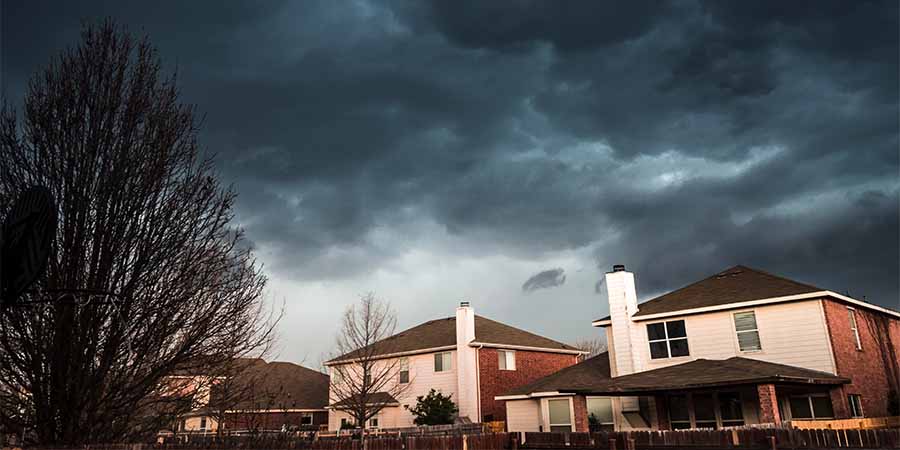
Nature has a way of throwing severe weather that can affect our homes with less notice, and usually, our roofs have to bear the brunt of these attacks.
Home owners should understand how it influences roofing in order to take necessary measures.
Here, we examine the kinds of severe weather that can affect roofs during heavy winds and rainstorms and offer useful preparation measures to consider in storm and natural disaster emergencies.
Thus, let’s visit the realm of the weather-related roof problems and work out some ways on handling that storm as a team.
The Effects of Severe Weather on Roofing
Rain, Rain, Go Away: The Impact of Heavy Rainfall
Roofs take the full force during heavy downpours.
Prolonged rains may result in accumulation of water, leaking of the surface covering and damage to the interior structure as well as the ceiling of your house.
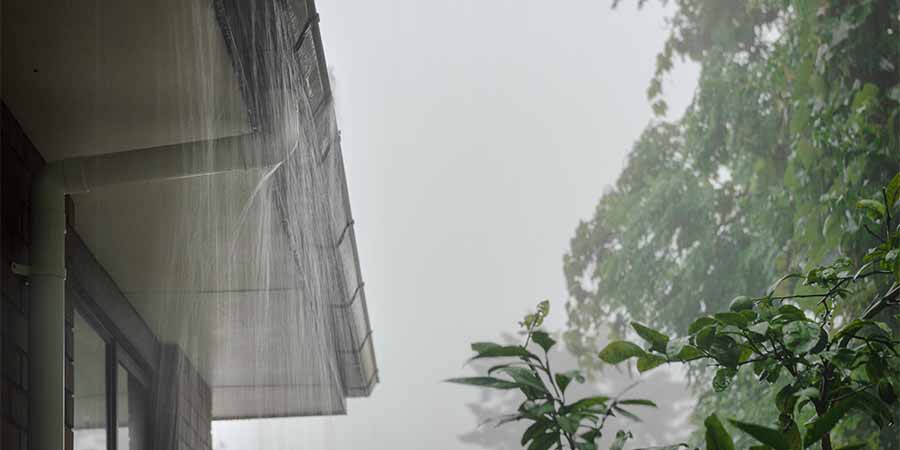
Prolonged exposure to moisture may promote the growth of mold and mildew, which will ultimately compromise the structural support offered by your roofing.
Learn how to strengthen your roof against heavy rains towards reducing water related damages.
Battling the Elements: The effects of wind on roofs
Severe weather conditions that include strong winds carry with them an enormous risk for roofing systems.
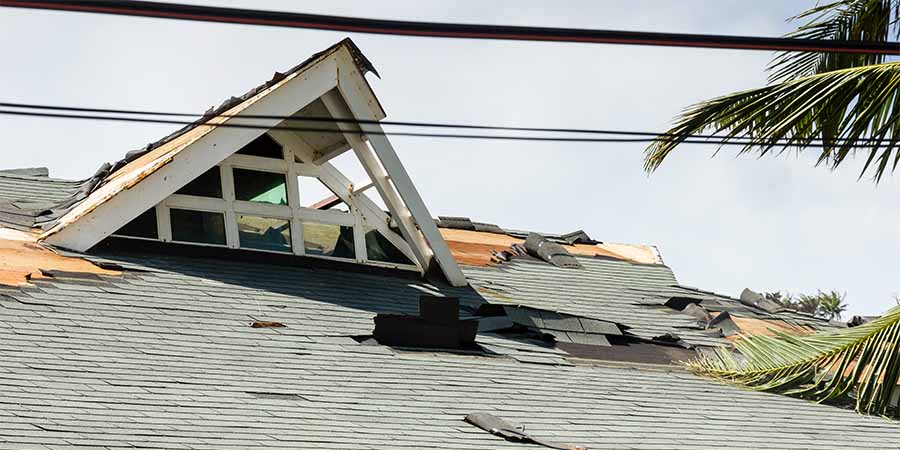
Lifting and displacement of shingles, tiles, etc, exposing the roof to leakages and eventually more damage due to strong wind gusts.
Moreover, wind can induce lift forces, resulting in weakening of the whole roof construction.
It is important to remember that roof reinforcement against high winds is vital for extending the life of a roof and protecting it in storms.
Snow & Ice: Snow’s Impact on Roofs
Heavy winter storms that occur during winter pose a new challenge on the roof.
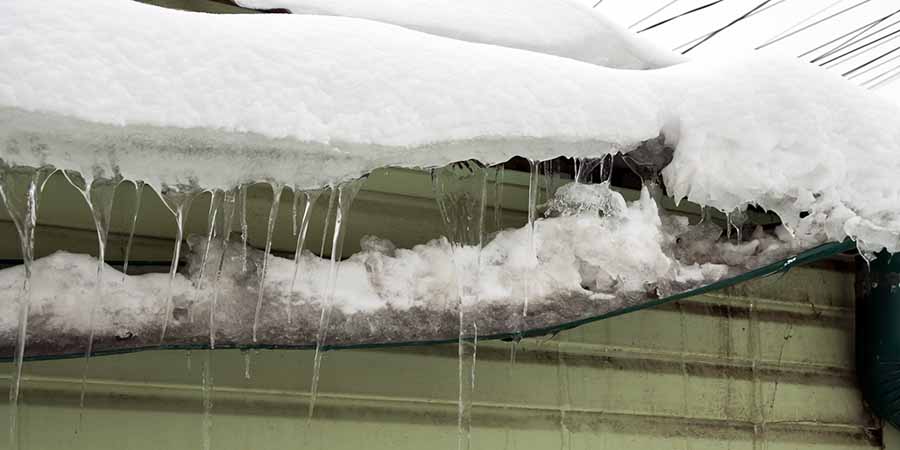
Loading can occur due to an excessively high weight of accumulated snow, causing sagging or collapse within roof structures.
Snow melting and refreezing may also result in ice dam formations which cause water buildup beneath shingles penetrating into roof structure.
It is important to apply appropriate snow removal methods and proper insulation in order to avoid snow damage to the roof.
Hailstorms: The Unpredictable Assault on Roofs
Roofs are particularly vulnerable when compared to other areas of a building.
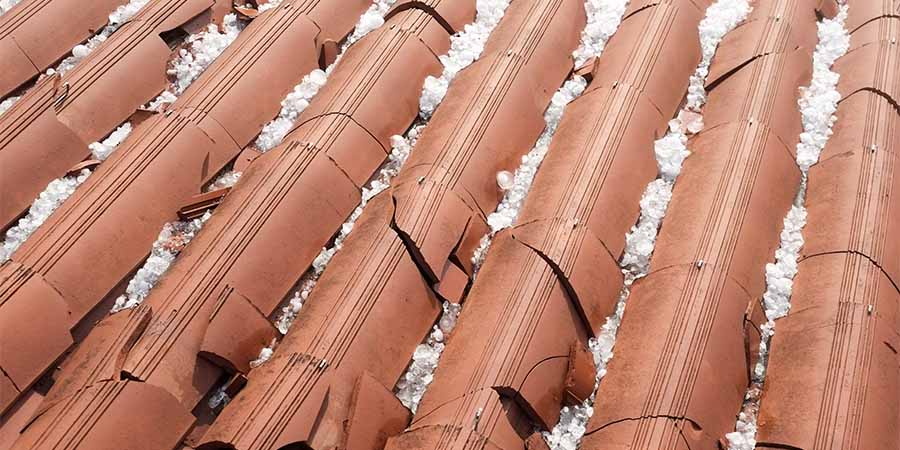
As such, hailstorms often lead to instant and noticeable deterioration.
Hailstones may dent, break or puncture roofing materials.
This may lead shingles loose and cause them to lose their granules which leave the underlying layers more susceptible to water damage.
Hail-resistant roofing materials and monitoring of your roof regularly, these are necessary steps to take for preventing any hail related problems.
Icy Perils: Confronting the Threat of Ice
Ice is particularly dangerous if it takes the form of ice storms or freezing rain.
Ice accumulating upon the surface of such roof may put quite a large load in it and as a result endanger its strength.
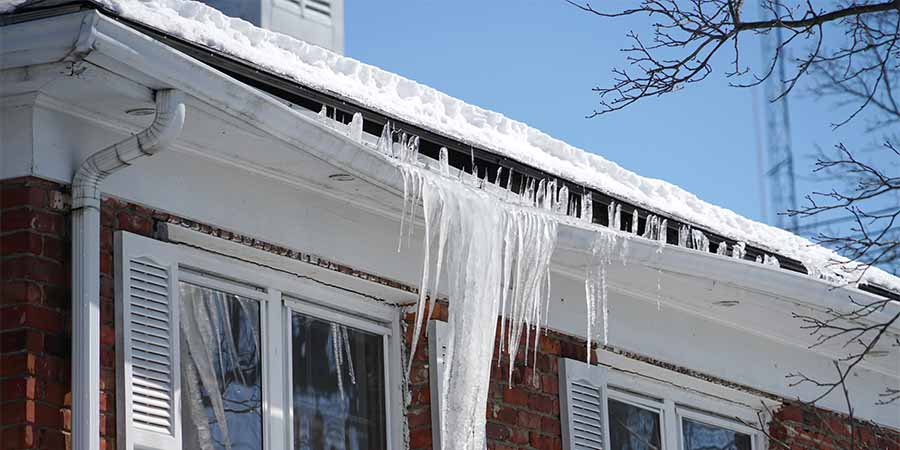
Moreover, as ice thaws and freezes again, it could permeate through cracks and crevices, increasing pressure to other rocks hence additional damage.
Ice-related roof damage can be avoided through proper insulation, ventilation, as well as periodical removal of ice accumulations.
Tornado Fury: The Unleashing of Nature’s Wrath
Roofs are among the worst affected areas when tornadoes come out.
Torn-off roofs are very common where there are high-speed winds and turbulent atmosphere associated with tornadoes.
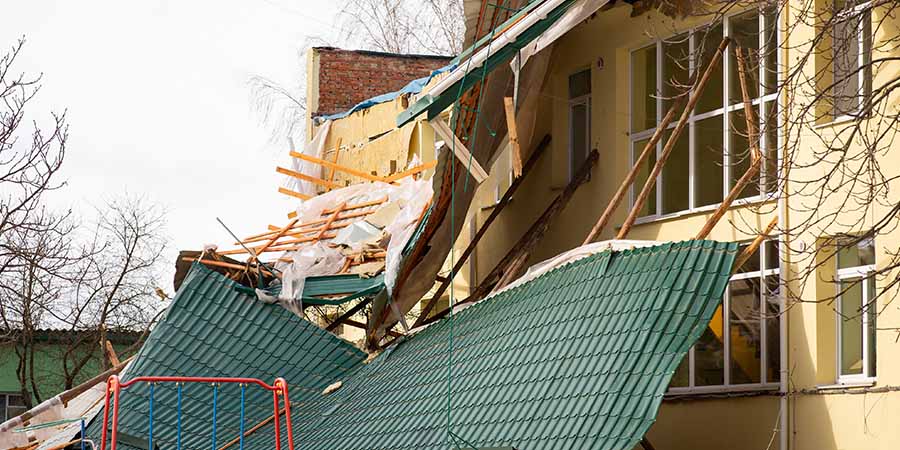
With speeds close to the impossible for humans, a tornado can uproot trees, throw dust and break roof tops, thus subjecting properties to massive water inundations.
Roof design that can withstand a tornado and following safety precautions when tornado warnings is issued helps minimize devastation of these fierce storms.
How to Prepare for Storms and Other Natural Disasters
Continuing from the previous section on the effects of severe weather on roofing, here are additional essential steps you can take to prepare for storms and protect your roof:
Annual Roof Inspection
A regular check-up of the roof by a roofing contractor would help indicate any existing damage, weak spots, and areas which require regular maintenance.
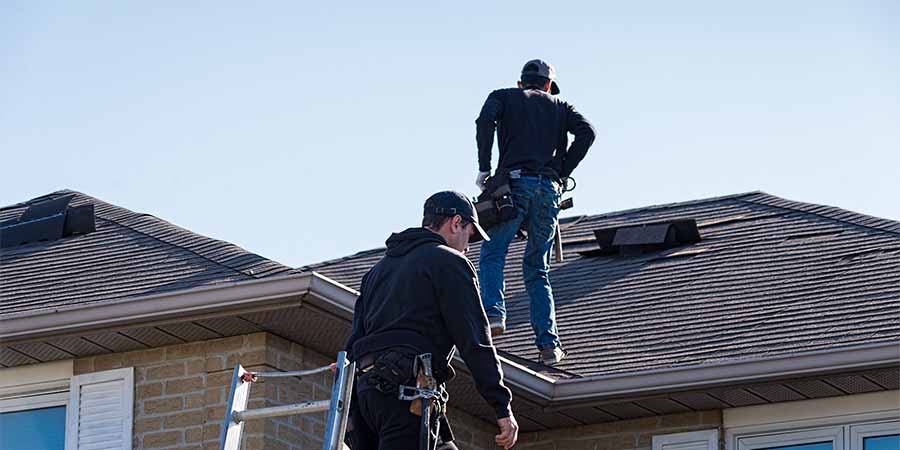
Arrange for a yearly check on your roof and fix whatever problems it has already or will have soon.
If you suspect a damaged roof, contact a roofing professional who will inspect and help you.
You will strengthen the roof’s resistance to heavy weather by actively finding and addressing any possible issues.
Prompt and Timely Repairs
If, indeed there are defects on your roofs like loose shingle, weakened flashings and evidence of water leakage, you should repair them right away.
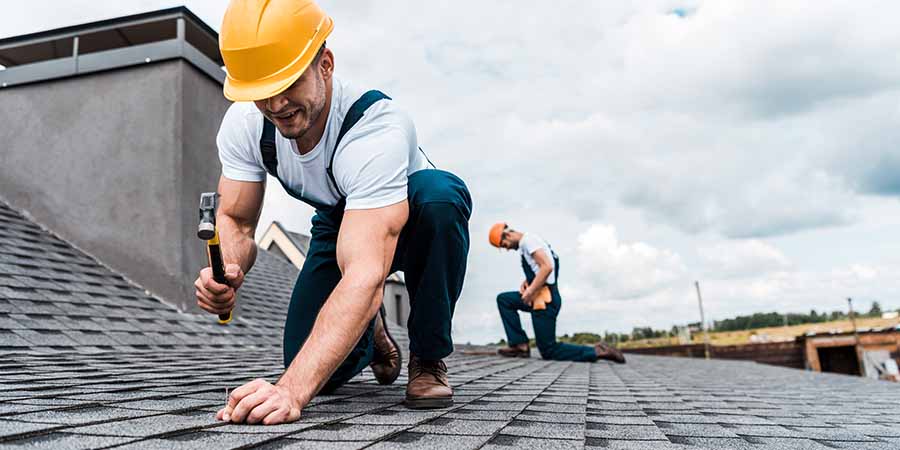
Failing to make such repairs will aggravate the damage, thereby rendering your roof more susceptible to storm destruction.
Find a reliable roofer to fix your roof fast and well in order not to impair its integrity.
Trim Trees Near Your Home
Branches of trees and trees near your house can be dangerous if it gets stormy.
Such strong wind as breaking and uprooting of trees might be fallen on the roof, leading to very serious damage.
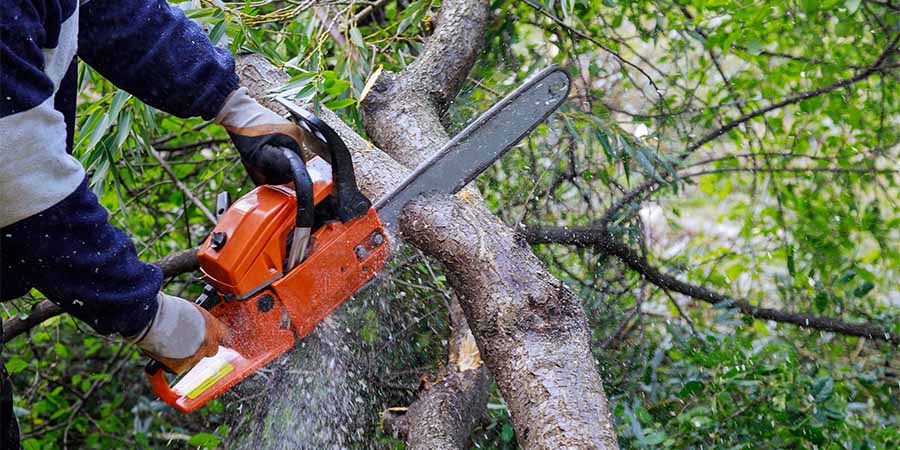
Ensure that you regularly trim and maintain any trees around your property, particularly those growing directly next to your roof.
You can also save the roof from weather-related severe damages by reducing the fall risks of the branches and even trees.
Roof Replacement When Necessary
If you realize that the roof is close to its maximum life-span or it has very extensive damages not easy to repair, then maybe you should contemplate having a new roof.
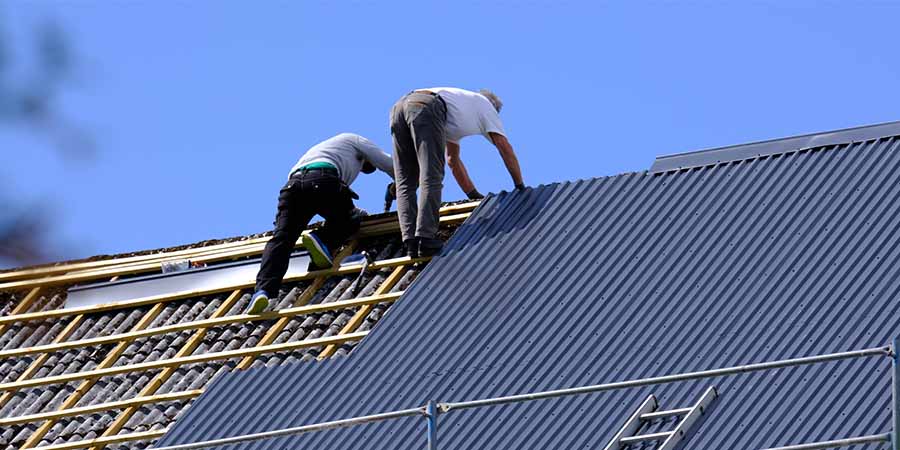
The use of new roof made of strong, waterproof materials will ensure that the house is safe in the event of harsh weather conditions.
Find out the most suitable materials and designs from roofing professionals suited for your region and climate.
You should also check your insurance coverage to ensure that it covers these damages.
The insurance process of roof replacement entails several essential steps that should be adhered to in order to achieve a flawless result.
Conclusion
The issue is not solely related to knowledge, but action should be taken to guard your investment and provide a safe environment for your family members against exposure to extreme weather that wears out roofs.
Thus, in the course of this in-depth examination of the impact of extreme weather on roof and how to prepare for storms and other catastrophes we have revealed the undisclosed threats and exposed tips on how to strengthen your house.
By acknowledging how heavy rainfall, high wind, snow, hail, ice and even a tornado affect your roof, you will be able to specifically strengthen its fortitude.
Annual roof inspections, quick response to repairs, tree trimming around your house, and roof replacement are some of the key steps you should take towards strengthening your roof’s defense.
Taking care of your roof will mean that you have prepared your home when it comes to storms and natural disasters.
As such, pay attention to the points in this article so as to have confidence about storm readiness of your house ahead.
Need Help With Roof Maintenance?
Pro-Tech Roofing services all of northeast Oklahoma, including the communities: Tulsa, Bartlesville, Bixby, Broken Arrow, Jenks, Catoosa, Coweta, Claremore, Collinsville, Glenpool, Grand Lake, Inola, Mounds, Muskogee, Oologah, Owasso, Pryor, Skiatook, Sand Springs, Sapulpa, Tahlequah and Wagoner.
We provide residential roofing services in Tulsa and throughout northeast Oklahoma. View a more complete gallery of Oklahoma roofing projects.
If you need roofing in Tulsa or any Oklahoma community, give us a call at (918) 250-7663 or contact us here.
